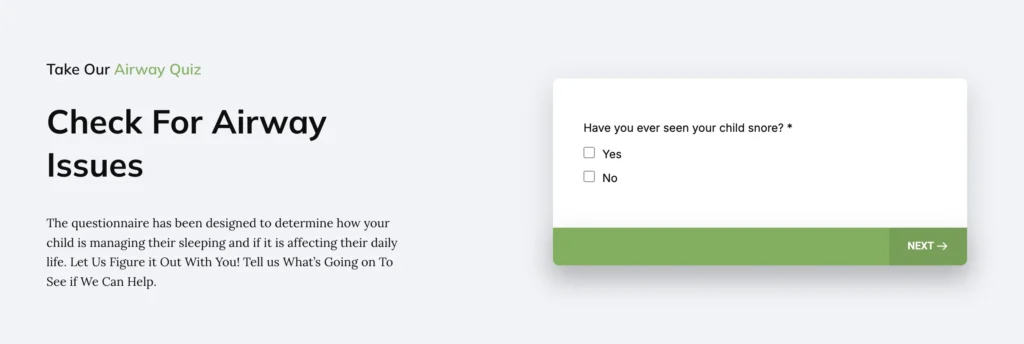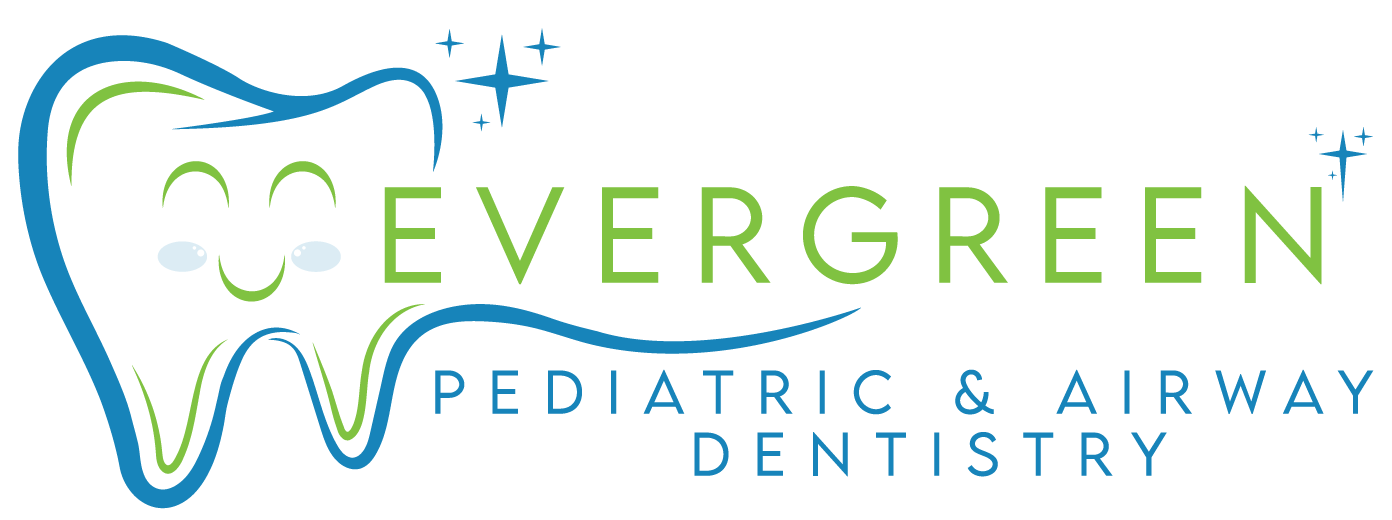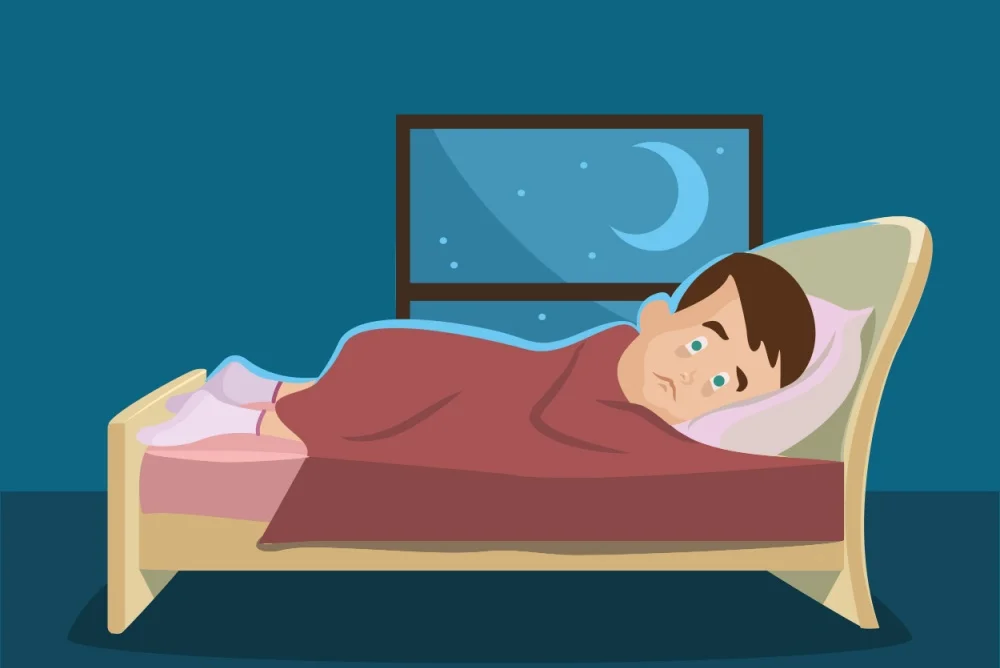If your child is snoring and you’re in Kirkland, WA, and you’re wondering if it’s something to be concerned about, you’re not alone. Snoring in children isn’t just noisy; it can sometimes point to sleep-related issues that impact their well-being.
In this guide, we’ll walk through the causes of snoring in children, explore practical solutions, and offer insights on when it’s time to seek professional help. Dr. Susan Kim at Evergreen Pediatric & Airway Dentistry provides specialized care and guidance to help your child—and your family—sleep soundly.
What Causes Snoring in Kids?
Snoring happens when airflow through the mouth and nose is partially blocked, causing vibrations in the throat, which produce that snoring sound. Occasional snoring isn’t usually a worry, but regular snoring in children could indicate underlying issues. Here are some common factors:
- Nasal Congestion: Allergies, colds, or even minor sinus issues can block airflow through the nose, making kids more likely to snore.
- Enlarged Tonsils or Adenoids: Swollen tonsils or adenoids can partially block the airway, especially when a child is lying down.
- Sleep Position: Sleeping on the back can cause the tongue and soft palate to fall back, narrowing the airway.
- Excess Weight: Extra weight, particularly around the neck, can compress the airway and make breathing harder during sleep.
- Airway Development Issues: A smaller or underdeveloped airway can contribute to snoring, as it makes it harder for air to flow smoothly.
 Could Snoring Be a Sign of Something More Serious?
Could Snoring Be a Sign of Something More Serious?
While snoring itself isn’t always a cause for concern, it can sometimes be a symptom of obstructive sleep apnea (OSA). OSA occurs when a child’s breathing repeatedly stops and starts during sleep, leading to poor quality of rest and symptoms that extend into the daytime:
- Daytime Fatigue: Interrupted sleep leaves children feeling drained during the day, affecting their mood and energy levels.
- Concentration Issues: Sleep disruptions can make it harder for children to focus, which may affect their school performance.
- Behavioral Challenges: Fatigue from poor-quality sleep can lead to irritability, mood swings, and even behavioral issues.
- Health Risks: Left untreated, sleep apnea can increase the risk of hypertension, heart problems, and metabolic concerns.
How an Underdeveloped Airway May Lead to Snoring
One of the lesser-known contributors to snoring in children is an underdeveloped airway. When a child’s jaw or airway is smaller than usual, there is less room for airflow, making it easier for tissues in the throat to vibrate and cause snoring. If untreated, this issue can persist into adulthood, affecting not only sleep but also overall health.
Evaluating for Sleep Apnea
If your child snores frequently or exhibits other symptoms of sleep-related issues, it might be time to consider a sleep apnea evaluation. Here’s a breakdown of two common methods to help diagnose sleep apnea:
Home Sleep Test:
This option allows your child to be monitored in the comfort of their own bed. With a simple device that records breathing, heart rate, and oxygen levels, you can get an initial look at how they’re sleeping. After the test, the data is analyzed by a sleep specialist to check for sleep apnea.
In-Lab Sleep Study:
For a more comprehensive evaluation, an overnight study at a sleep center can give a detailed view of your child’s sleep patterns. Here, specialists monitor brain activity, breathing, and heart rate continuously to capture disruptions and evaluate sleep quality.
How a Narrow Airway Impacts Quality of Life
A restricted airway doesn’t just cause snoring; it can affect various aspects of your child’s daily life:
- Increased Snoring: A narrower airway intensifies airflow turbulence, resulting in more frequent and louder snoring.
- Sleep Apnea Risk: Children with smaller airways have a higher chance of experiencing obstructive sleep apnea, as their airways are more likely to become blocked during sleep.
- Daytime Challenges: Poor sleep can lead to fatigue, trouble focusing, irritability, and strained relationships due to the impact of nighttime disruptions.
Pediatric Snoring Treatments
Addressing sleep apnea in children requires a thoughtful, individualized approach based on each child’s symptoms and specific needs. Here’s a look at common treatment methods:
CPAP Machines:
Continuous Positive Airway Pressure (CPAP) machines provide a steady stream of air through a mask to help keep the airway open, especially beneficial in moderate to severe cases.
Oral Appliances:
These oral mouthpiece devices, worn during sleep, reposition the jaw and tongue to help keep the airway open, supporting better airflow through the night.
Myofunctional Therapy:
This involves specialized exercises aimed at strengthening the muscles in the mouth and throat to improve breathing patterns naturally.
Surgery:
In certain severe cases, surgery may be necessary to remove obstructions such as enlarged tonsils or adenoids, which can play a major role in airway restriction.
Vivos Treatment:
Focused on addressing the underlying root causes of airway issues, the Vivos treatment is a dental sleep medicine approach that works to expand the airway and improve breathing over time. Dr. Susan at Evergreen Pediatric & Airway Dentistry in Kirkland, WA, is a certified provider of the Vivos system and can guide families through this innovative treatment.
Each of these options brings its own advantages and may be recommended based on the child’s unique needs. If your child is experiencing symptoms of sleep apnea, reach out to Dr. Susan for a personalized consultation and explore the best solution for your child’s restful, healthy sleep.
 Helping Your Child Stop Snoring: 10 Practical Solutions
Helping Your Child Stop Snoring: 10 Practical Solutions
- Encourage Healthy Habits: A balanced diet and regular exercise can help manage weight, reducing the likelihood of snoring for children who may have extra weight around the neck.
- Try Nasal Strips or Sprays: Over-the-counter nasal strips or saline sprays can ease congestion and promote easier breathing.
- Adjust Sleeping Position: Teach your child to sleep on their side, which helps keep the airway open and reduces the chance of snoring.
- Consider Oral Appliances: Devices designed to hold the jaw and tongue in place can help keep the airway open. The Vivos System, for example, is a customized option that addresses both snoring and sleep apnea.
- Stay Hydrated: Make sure your child drinks enough water throughout the day, as dehydration can make throat tissues sticky and more likely to vibrate.
- Limit Heavy Meals Before Bedtime: Encourage having dinner a few hours before sleep to avoid indigestion or reflux, which can worsen snoring.
- Raise the Head of the Bed: Using a supportive pillow or slightly elevating the head can help keep the airway clear.
- Create a Sleep-Friendly Environment: A quiet, dark, and cool bedroom promotes good sleep. Set a regular bedtime routine to help your child settle down.
- Reduce Allergens: Remove dust, pet dander, and other allergens from your child’s room to reduce nasal congestion and ease breathing.
- Consult a Specialist: If your child’s snoring persists, a consultation with a pediatric airway specialist like Dr. Susan Kim can be a valuable step. She can assess your child’s specific needs and recommend treatment options.
The Vivos Treatment for Kids’ Snoring and Sleep Apnea
The Vivos System provides a non-invasive solution for addressing snoring and sleep apnea in children with smaller or underdeveloped airways. This oral appliance gently reshapes and expands the upper and lower jaw, improving airflow and reducing symptoms. Here’s how it works:
- Customized for Each Child: The appliance is designed to fit comfortably and support jaw expansion over time.
- Gradual Improvement: As the jaw widens, the airway opens, reducing snoring and lowering the risk of sleep apnea.
- Effective for Kids and Adults: While it’s a valuable treatment for children, adults can benefit as well. For children, this treatment can prevent future sleep-related issues by promoting proper jaw development.
Why Choose Dr. Susan Kim at Evergreen Pediatric & Airway Dentistry?
Selecting the right professional to evaluate and treat your child’s snoring and airway health is key. Dr. Susan Kim brings years of experience working with children’s sleep and airway challenges, using advanced techniques like the Myobrace, Myofunctional therapy & the Vivos System to get to the root of the problem and provide effective care.
Dr. Susan’s approach includes:
- Personalized Care: She takes time to understand each child’s unique needs and concerns.
- Tailored Treatment Plans: Dr. Susan crafts custom solutions focused on improving airway health and sleep quality.
- Comprehensive Support: With a caring and thorough approach, she ensures families feel informed and supported every step of the way.
Help Your Child Get Better Sleep
Imagine your child waking up refreshed, energetic, and ready to face the day. Reduced snoring can mean better sleep quality, improved mood, and greater focus. If you’re ready to help your child get the restful nights they need, consider a consultation with
Dr. Susan and her team are dedicated to finding the best solutions for your child’s snoring, so everyone in the family can enjoy peaceful nights.
Schedule Your Child’s Consultation Today!
Evergreen Pediatric Dentistry
https://www.google.com/maps?cid=14720788683151219551
12910 Totem Lake Blvd NE #103, Kirkland, WA 98034, United States
(425) 814-3196
https://evergreenkidsdentist.com/
 FAQs About Snoring and Sleep Disorders
FAQs About Snoring and Sleep Disorders
Is snoring something I should worry about?
Snoring isn’t just about noise; it can signal a Sleep Breathing Disorder (SBD) that needs attention. Millions of people, around 42 million in the U.S. alone, deal with SBDs, making it a widespread concern.
One common SBD is Obstructive Sleep Apnea (OSA), where the airway becomes blocked, making it hard for air to flow freely into the lungs. Recognizing the possible seriousness of SBDs is essential for getting timely and effective treatment.
How common is sleep apnea?
Sleep apnea affects more people than you might expect:
- About 1 in 5 adults have mild OSA.
- Roughly 1 in 15 adults experience moderate to severe OSA.
- Approximately 9% of middle-aged women and 25% of middle-aged men deal with OSA.
What are the health impacts of untreated sleep apnea?
Sleep apnea can have serious health consequences:
- Heart health: 70% of people who’ve had a heart attack also have mild OSA.
- Type 2 diabetes: Sleep apnea is present in 86% of obese individuals with type 2 diabetes.
- High blood pressure: 43% of individuals with mild OSA experience hypertension.
- Stroke risk: Individuals with untreated sleep apnea are four times more likely to suffer a stroke.
- Safety concerns: Drowsy driving, often caused by sleep apnea, leads to about 100,000 car accidents every year. Over time, untreated sleep apnea can affect memory, increase the likelihood of weight gain, and contribute to various cardiovascular conditions, reducing life expectancy by as much as 30% if left unmanaged.
Does insurance cover sleep apnea treatment?
Fortunately, many medical insurance plans include coverage for sleep apnea treatment. However, coverage levels and limitations vary by plan, so it’s wise to check with your provider for details on what’s included.
Why Do Some Slim Children Snore?
Snoring isn’t just an issue for people carrying extra weight; slim individuals can snore too. Some common reasons include:
- Underdeveloped Jaws: A narrower airway can make snoring more likely.
- Associated Conditions: People with underdeveloped jaws often experience related issues such as:
- Mouth breathing
- Teeth grinding
- Misaligned teeth
- Facial discomfort
- Airway Obstruction: These issues can impact airflow, leading to snoring during sleep.
Dr. Susan helps in identifying and addressing the root causes of snoring, regardless of body type, providing tailored solutions to improve sleep quality.
Can snoring be treated permanently?
Possibly, there may be a lasting solution to snoring. The Vivos treatment, for example, aims to treat the underlying causes of snoring, rather than offering just a temporary fix. Unlike lifelong treatments like CPAP, Vivos treatment is designed to last 12 to 24 months, addressing the structural issues that contribute to snoring and sleep apnea. This means that, after completing the program, many patients can enjoy snore-free nights without the need for ongoing interventions.
For those children in Kirkland, WA, Dr. Susan Kim at Evergreen Pediatric & Airway Dentistry offers an array of sleep solutions, including the Vivos treatment, to help patients get back to restful nights and rejuvenated days.



